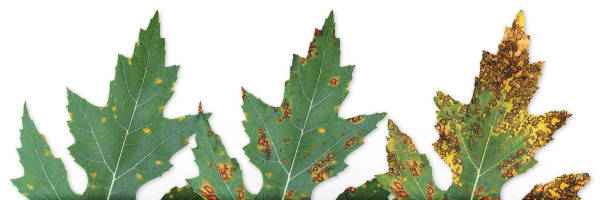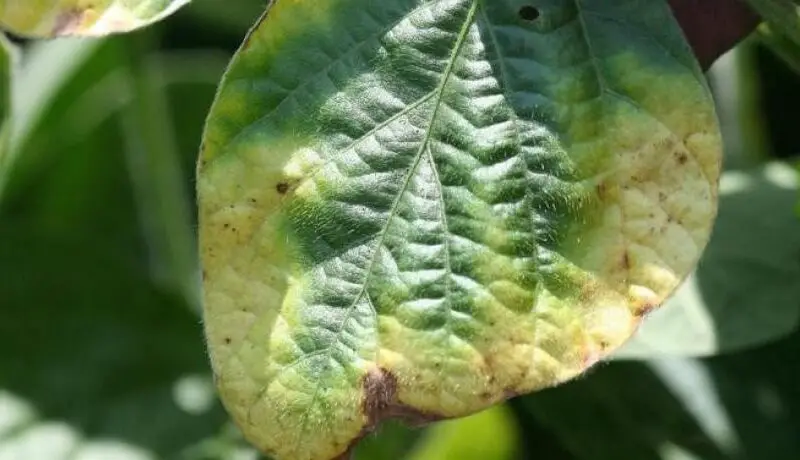Calcium, in the form of calcium pectinate, is responsible for the cohesion of plant cell walls.
When calcium is deficient, new tissues, such as root tips, young leaves and shoot tips, are often deformed due to poor cell wall formation. Calcium is also used in the activation of certain enzymes and for sending signals that coordinate certain cellular activities.
Most of the time, the soil has no difficulty in providing the necessary dose of calcium, however, some garden plants are more sensitive to a lack of calcium, here are 15 of them:
- Apples
- Broccoli
- Cabbage
- Carrots
- Celery
- Cherries
- Citrus
- Melons
- Grapes
- Lettuce
- Peaches
- Pears
- Potatoes
- Tobacco
- Tomatoes
Contents
Timeline
- Symptoms of calcium deficiency often appear quickly; within one to two weeks, the first spots on the oldest leaves already appear. They usually start as small light brown spots that later enlarge.
- Two weeks later, the older leaves still show more spots, often also at the leaf margins, such as in case of potassium deficiency or burning phenomena.
- Sometimes the young shoots become wrinkled and the calyxes have small, thin, stunted leaves without spots.
- Older leaves die slowly; around the spots may appear yellowish nebulous marks. The older the leaf, the more characteristic the symptoms are.
- Flowering is also inhibited and slowed down, and the number of pistils remains well below its usual norm. The flower clusters do not close and remain small.
Calcium deficiency
Calcium is not mobile in the plant. The plant therefore relies on the transpiration process in which the roots absorb water from the soil (which contains the desired calcium).
It then transports this water to the new shoots where the calcium is used and the excess water vapor escapes through the stomata of the leaves. Anything that slows transpiration, such as high humidity or cold temperatures, can cause calcium deficiency, even if calcium levels are normal in the substrate.
Plant parts that transpire poorly (i.e. young leaves and fruit) will be affected first. Apical drying of tomatoes is a classic case of calcium deficiency. Calcium deficiency can occur if fertilizer solution levels are below 40-60 ppm and/or if potassium, magnesium or sodium levels are too high.

Reasons for calcium deficiency
- Cultivation on calcium-fixing soils.
- Excess ammonium, calcium, magnesium and/or sodium around the roots. Ammonium inhibits calcium absorption the most, sodium the least.
- Evaporation problems due to too high EC value or too high or too low relative air humidity.
How to correct a calcium deficiency
Calcium fertilizers can be applied during seeding, or as foliar fertilizer. In the case of foliar fertilization, attention must be paid to the stage of fruit development. If the fruit is not yet completely covered, there is a risk of degeneration.
Calcium can be added by fertilizing with calcareous fertilizers, such as a calcium nitrate solution. In case of too acidic soils, milk of lime can be used to increase the pH value.
Use good soil, not too acidic. Acidic soils generally contain too little calcium. Good soil and coconut should be limed beforehand.
Summary
The majority of soils contain sufficiently high amounts of calcium to meet the nutritional needs of plants (between 55 and 220 lbs CaO/hectare).
However, most fruits and vegetables remain more sensitive to a lack of calcium (list at the top of the article).









